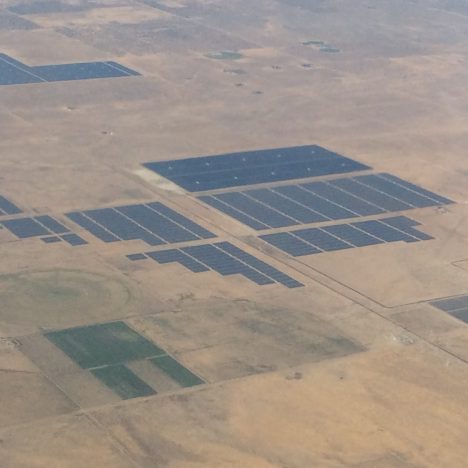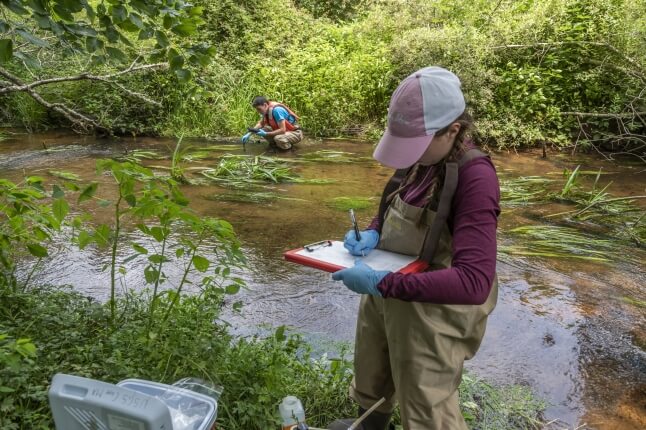News
Close-up view of ice floes at 79 N from 500 feet. The dark features on the ice are melt ponds, and the dark areas between the floes are open water of the Arctic Ocean. The floes are very flat, signifying “first year ice.” Credit: Steve Wofsy.
This is an excerpt from a post written by Steven Wofsy, Abbott Lawrence Rotch Professor of Atmospheric and Environmental Science, for the NASA "Notes from the Field" blog. Wofsy is principal investigator for the Atmospheric Tomography Mission (ATom), which will study the impact of human-produced air pollution on greenhouse gases and on chemically reactive gases in the atmosphere. Wofsy and his colleagues are flying around the globe this summer on a DC-8 airplane taking scientific measurements.
I have been looking forward to the second leg of the ATom mission since I first worked up the plan, collaborating with the others on the leadership team and with the flight operations crew from NASA’s Armstrong Flight Center. It would start in the hot, high desert in Palmdale, California, and journey to the high Arctic, dipping low over the floating sea ice near the North Pole, before ending in Anchorage, Alaska. What an opportunity to observe the extremes of Earth’s weather and climate, atmospheric composition, and ecosystems!
We flew this mission on August 1. The contrast between the environments could not have been more dramatic. We started our work at 4 a.m. so that the DC-8 could take off before the searing heat of the day — forecast to be 110 degrees F (43 degrees C). A few hours later we were in one of the coldest, most remote parts of the Northern Hemisphere. It was stunning and beautiful. But also sobering, because both places are experiencing huge impacts from the warming climate and from air pollution carried there on the winds.
In the High Desert: fires, urban pollution, and a solar farm

Solar farm in the desert north of Palmdale, Calif. Credit: Steve Wofsy.
The desert near Palmdale was particularly forbidding when ATom started up. Large fires in the nearby mountains blanketed the region with choking smoke as ash sifted down from the sky. Increasingly frequent fires are an expected consequence of climate warming in this area. Even after the fires died down, the atmosphere over the desert was hazy with urban pollution originating in the Los Angeles Basin. It was unnerving to be in the midst of these events.
But as we departed the desert, I could see huge solar and wind farms generating carbon-free electricity. This sight was much more hopeful. If we apply our minds and resources to the problem, we can make significant progress in slowing the increase in atmospheric CO2 and generate new economic value at the same time. It is a long process though—a generational challenge.
To read the full NASA blog post, click here.
Topics: Environment
Cutting-edge science delivered direct to your inbox.
Join the Harvard SEAS mailing list.
Scientist Profiles
Steven C. Wofsy
Abbott Lawrence Rotch Professor of Atmospheric and Environmental Science




